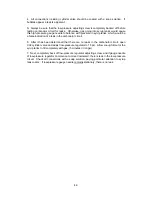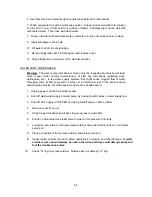
The water source should be regulated, this is normally performed by the use of an in line
water regulator. If the water is not regulated and the water pressure is equal or greater
than the incoming CO2 the act of carbonation will be greatly inhibited or completely
eliminated.
At the proper settings, the gas pressure will stop the water from entering the carbonator
tank. To force the water into the tank a liquid level control and motor/pump will be used.
This combination will force the water into the tank mixing the water and CO2 together.
The carbonator utilizes a Soda Jet Recirculating Principle. Our Company pioneered this
principle in the early 1950's. This principle produces instantaneous carbonation at
extremely large capacities of 100 gallons per hour minimum.
The level of the carbonated water within the stainless steel mixing tank is used to operate
the motor driven pump. The liquid level control, in conjunction with a probe housed in the
carbonator tank, control the pump motor. The motor will come on when the carbonated
water within the mixing tank recedes to a predetermined low level and stops the pump
motor when the carbonated water reaches a predetermined high level.
During the cycle of operation, fresh water enters the carbonator through the soda jet after
passing through a short tube to the water pump inlet fittings. The water pump has
impellers which drives the water through a dual check valve and then through the soda
jet and into the carbonator tank.
The position and angle of the soda jet is fixed to direct an extremely high velocity jet of
fresh water so as to impinge upon the surface of the stored body of carbonator water
within the stainless steel mixing tank. The force created by this jet of fresh water entering
the mixing tank causes all the water within to cascade and foamesce through the carbon
dioxide gas area in a continuous recirculating-manner.
This action causes a breakdown of the surface tension of the water, forming numerous
minute gases filled water bubbles. The micro thin walls of these water bubbles
surrounded by gas both inside and out, offer maximum water surface for the absorption
of the gas. The size opening through this jet permits large volumes of water to be
carbonated.
As the incoming water is being carbonated, the level within the tank rises to contact the
upper probe, which will de-energize a relay on the liquid level control and stop the motor
from turning the pump. This motor will be inactive until water within the tank recedes
below the long probe, at which time, the relay on the liquid level control will close,
engaging the motor once again.
1-12
















































